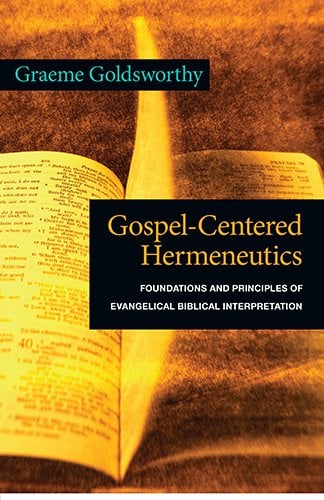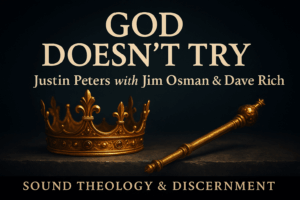⏱️ Estimated Reading Time: 4 min read
When I think about the importance of biblical theology and learning from its leading scholars, one of the first names that come to mind is Graeme Goldsworthy. Nearly every work Goldsworthy has completed has BT as its driving force, which is really helpful for pastors and church leaders in learning how to keep their preaching and shepherding with this important framework. In this particular volume, Goldsworthy turns to the task of showing how BT affects the process of hermeneutics. As Goldsworthy remarks, “Our ability to interpret Scripture must be saved, justified, and sanctified through the gospel” (16).
Goldsworthy, in a systematic fashion, divides Gospel-Centered Hermeneutics into three parts: prolegomena, challenges to evangelical hermeneutics, and reconstruction of evangelical hermeneutics. In Part One, Goldsworthy seeks to consider “the basic assumptions…of evangelical belief and biblical interpretation,” and he centers the upcoming arguments on the idea that “The person and work of Jesus provide us with a single focal point for understanding reality” (21). In a helpful second chapter, Goldsworthy sorts us into three main presuppositional stances. Most of us follow Tertullian, Aquinas, or Augustine in our presuppositional stances, which will, in turn, drive our hermeneutics. Goldsworthy demonstrates that he does not fall under Tertullian’s Fideism or Thomas’ Empiricism but Augustine’s model of Presuppositionalism. Then, consulting the four solas, Goldsworthy posits four pillar presuppositions, which will ultimately pave the way forward for further conversation:
“The principle of ‘grace alone’ points us to the ontological priority of God.” (47)
“The principle of ‘Christ alone’ points us to the soteriological and hermeneutical priority of the gospel of Christ” (48)
“The principle of ‘Scripture alone’ points us to the phenomenological and material priority of Scripture” (49)
“The principle of ‘faith alone’ points us to the ontological inability of the sinner and the epistemological priority of the Holy Spirit.” (50)
All in all, Goldsworthy wraps up his argument for a Biblical Theology of interpretation by pointing to “the centrality of Jesus Christ in the gospel as hermeneutic norm” (85).
In Part Two, the focus shifts to highlighting some “examples of major philosophical influences that have impinged negatively on Christian biblical interpretation in certain periods of the church’s history” (90). Goldsworthy calls these influences “eclipses,” and spends many chapters unpacking how the early church, the medieval church, Roman Catholicism, liberalism, philosophical hermeneutics, historical criticism, literary criticism, and evangelicalism itself, all in their own unique way pose challenges to our idea of proper hermeneutics. All of these chapters are important, but I would say two of the most helpful for me were his chapters on the early church and evangelicalism.
It is in Part Three where the pastor seeking a better understanding of healthy hermeneutics will find the most practical wisdom. Goldsworthy is arguing throughout this book, but especially here, that our practices need reform. To do so, we have to evaluate the literary, historical, and theological dimensions of hermeneutics. A couple of highlights from this section include Chapter 16, where Goldsworthy shows us how the Old and New Testament are related. “We conclude that there is no dimension of the Old Testament message that does not in some way foreshadow Christ” (251). Goldsworthy goes on to outline a huge table of “macro-typology” to end the chapter, showing the salvation history of the Old Testament and how Christ fulfills it. Another important chapter is his discussion on contextualization in Chapter 18, defining contextualization as being made up of six key parts: Bible translation, Scripture interpretation, gospel communication, believers’ instruction, incarnation of truth, and systemization of Christian faith (276).
My underlines fill the pages of Gospel-Centered Hermeneutics. In the life of any preacher, writer, or student of God’s Word, we are subjected to the importance of treating the text before us with great care. We cannot fall off of either side of the horse. Goldsworthy’s book serves as tight, rigid, but solid and sure guardrails for our journey toward an evangelical hermeneutic. This is a must-have for seminary students and preachers.



